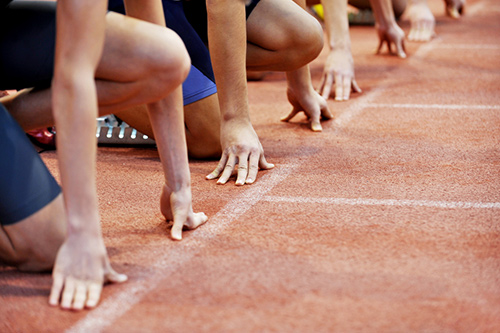
Proper rest
Proper rest is vital to any athlete’s physical conditioning. Athletes should schedule out at least one day of rest each week to fully recover from the previous week’s rigorous practice and competition.
If possible, multi-sport athletes should set aside a period of time off from vigorous activity at some point in the year. This doesn’t mean the athlete must be a couch potato for 30 days, but to simply dial back intensity for a period of time. This is especially important for athletes who specialize in one sport, as year-round repetitiveness of the particular motions related to a singular sport increase one’s odds of injury. Well-calculated rest will actually improve an athlete’s performance, while overuse injuries will set them back.
If an athlete is dedicated to sports year-round without a true offseason, scheduling a week or two of rest will help the body recover. It’s important to note that multi-sport athletes are less likely to experience overuse injuries than specialized athletes, as multi-sport athletes experience less repetitiveness from sport-to-sport.
Active Rest
Active rest is also another option for athletes who dislike the idea of a full, sedentary rest day. Many coaches will actually work these active rest days into the team’s practice schedule, such as light practices before an event. Athletes may take a similar concept and apply it to their days off when they’re not at competition or practice. Active rest may include activities such as stretching, light swimming, light resistance training, mobility work, or light cardio.
Sleep
That’s right, no rest is adequate without a proper sleep schedule. Between track season, the last quarter of school, and a teenager’s expansive social life, it can be tough for parents to convince their school-age athletes that they need adequate sleep. But a proper sleep schedule will not only improve their sports recovery but will also help their grades and improve their sociability. It’s not easy being happy, outgoing, and scholarly while sleep deprived.
Adequate warm-up and cool down
It’s not uncommon of adolescent athletes to “sleepwalk” through or even skip their warm-up. All coaches will require it before practice and competition, but they cannot keep track of every athlete. Giving 100 percent effort during a warm-up optimizes an athletes performance during practice and competition. This does not mean athletes should aim to deplete their energy, but to pay attention to the stretches and focus fully on the muscles they are warming up. Adequate warm-up and cool-down exercises are one of the most direct ways an athlete can avoid injury, which is why it’s always emphasized.
Fitted Shoes
Athletes should always wear shoes and spikes tailored to their specific event. Improper footwear can increase the impact and stress on the active muscles, joints and other functions associated with their event. A properly-fitted shoe will help stabilize an athlete’s foot, ankle and knee to avoid injury caused by instability. Keep note of the shoe’s wear and tear throughout the season and replace them if they become too worn.
Proper training
Strong, well-conditioned muscles not only improve performance, but they take pressure off joints, tendons and ligaments as well. In addition, a well-thought-out training regimen will ensure the athlete reaches their athletic goals in an effective manner. Periodization, slowly increasing training intensity rather than jumping into a vigorous workload, is the best way to ensure training is effective and safe.
A healthy diet
A balanced, healthy diet promotes recovery and prepares the body to operate at full capacity during practice and competition. The improved recovery will mean fewer injuries and will also lead to increased progress in performance—the faster the recovery, the sooner an athlete is back to training.
Ditch the Pop Tarts for yogurt with granola and fruit, start each morning off with eggs rather than cereal, and always remember to eat a healthy balance of fats, carbohydrates, and proteins each day.

